The Da Vinci Code Read online
Page 4
last minutes of life arranging his own body in this strange fashion.
Saunière looked remarkably fit for a man of his years… and all of his musculature was in plain view. He had stripped off every shred of clothing, placed it neatly on the floor, and laid down on his back in the center of the wide corridor, perfectly aligned with the long axis of the room. His arms and legs were sprawled outward in a wide spread eagle, like those of a child making a snow angel… or, perhaps more appropriately, like a man being drawn and quartered by some invisible force.
Just below Saunière’s breastbone, a bloody smear marked the spot where the bullet had pierced his flesh. The wound had bled surprisingly little, leaving only a small pool of blackened blood.
Saunière’s left index finger was also bloody, apparently having been dipped into the wound to create the most unsettling aspect of his own macabre deathbed; using his own blood as ink, and employing his own naked abdomen as a canvas, Saunière had drawn a simple symbol on his flesh – five straight lines that intersected to form a five-pointed star.
The pentacle.
The bloody star, centered on Saunière’s navel, gave his corpse a distinctly ghoulish aura. The photo Langdon had seen was chilling enough, but now, witnessing the scene in person, Langdon felt a deepening uneasiness.
He did this to himself.
«Mr. Langdon?» Fache’s dark eyes settled on him again.
«It’s a pentacle,» Langdon offered, his voice feeling hollow in the huge space. «One of the oldest symbols on earth. Used over four thousand years before Christ.»
«And what does it mean?»
Langdon always hesitated when he got this question. Telling someone what a symbol» meant» was like telling them how a song should make them feel – it was different for all people. A white Ku Klux Klan headpiece conjured images of hatred and racism in the United States, and yet the same costume carried a meaning of religious faith in Spain.
«Symbols carry different meanings in different settings,» Langdon said. «Primarily, the pentacle is a pagan religious symbol.»
Fache nodded. «Devil worship.» «No,» Langdon corrected, immediately realizing his choice of vocabulary should have been clearer. Nowadays, the term pagan had become almost synonymous with devil worship – a gross misconception. The word’s roots actually reached back to the Latin paganus, meaning country-dwellers. «Pagans» were literally unindoctrinated country-folk who clung to the old, rural religions of Nature worship. In fact, so strong was the Church’s fear of those who lived in the rural villes that the once innocuous word for» villager» – villain – came to mean a wicked soul.
«The pentacle,» Langdon clarified,» is a pre-Christian symbol that relates to Nature worship. The ancients envisioned their world in two halves – masculine and feminine. Their gods and goddesses worked to keep a balance of power. Yin and yang. When male and female were balanced, there was harmony in the world. When they were unbalanced, there was chaos.» Langdon motioned to Saunière’s stomach. «This pentacle is representative of the female half of all things – a concept religious historians call the ‘sacred feminine’ or the ‘divine goddess. ‘ Saunière, of all people, would know this.»
«Saunière drew a goddess symbol on his stomach?»
Langdon had to admit, it seemed odd. «In its most specific interpretation, the pentacle symbolizes Venus – the goddess of female sexual love and beauty.»
Fache eyed the naked man, and grunted.
«Early religion was based on the divine order of Nature. The goddess Venus and the planet Venus were one and the same. The goddess had a place in the nighttime sky and was known by many names – Venus, the Eastern Star, Ishtar, Astarte – all of them powerful female concepts with ties to Nature and Mother Earth.»
Fache looked more troubled now, as if he somehow preferred the idea of devil worship.
Langdon decided not to share the pentacle’s most astonishing property – the graphic origin of its ties to Venus. As a young astronomy student, Langdon had been stunned to learn the planet Venus traced a perfect pentacle across the ecliptic sky every four years. So astonished were the ancients to observe this phenomenon, that Venus and her pentacle became symbols of perfection, beauty, and the cyclic qualities of sexual love. As a tribute to the magic of Venus, the Greeks used her four-year cycle to organize their Olympiads. Nowadays, few people realized that the four-year schedule of modern Olympic Games still followed the cycles of Venus. Even fewer people knew that the five-pointed star had almost become the official Olympic seal but was modified at the last moment – its five points exchanged for five intersecting rings to better reflect the games’ spirit of inclusion and harmony.
«Mr. Langdon,» Fache said abruptly. «Obviously, the pentacle must also relate to the devil. Your American horror movies make that point clearly.»
Langdon frowned. Thank you, Hollywood.The five-pointed star was now a virtual cliché in Satanic serial killer movies, usually scrawled on the wall of some Satanist’s apartment along with other alleged demonic symbology. Langdon was always frustrated when he saw the symbol in this context; the pentacle’s true origins were actually quite godly.
«I assure you,» Langdon said,» despite what you see in the movies, the pentacle’s demonic interpretation is historically inaccurate. The original feminine meaning is correct, but the symbolism of the pentacle has been distorted over the millennia. In this case, through bloodshed.» «I’m not sure I follow.» Langdon glanced at Fache’s crucifix, uncertain how to phrase his next point. «The Church, sir. Symbols are very resilient, but the pentacle was altered by the early Roman Catholic Church. As part of the Vatican’s campaign to eradicate pagan religions and convert the masses to Christianity, the Church launched a smear campaign against the pagan gods and goddesses, recasting their divine symbols as evil.»
«Go on.»
«This is very common in times of turmoil,» Langdon continued. «A newly emerging power will take over the existing symbols and degrade them over time in an attempt to erase their meaning. In the battle between the pagan symbols and Christian symbols, the pagans lost; Poseidon’s trident became the devil’s pitchfork, the wise crone’s pointed hat became the symbol of a witch, and Venus’s pentacle became a sign of the devil.» Langdon paused. «Unfortunately, the United States military has also perverted the pentacle; it’s now our foremost symbol of war. We paint it on all our fighter jets and hang it on the shoulders of all our generals.» So much for the goddess of love and beauty.
«Interesting.» Fache nodded toward the spread-eagle corpse. «And the positioning of the body? What do you make of that?» Langdon shrugged. «The position simply reinforces the reference to the pentacle and sacred feminine.»
Fache’s expression clouded. «I beg your pardon?»
«Replication. Repeating a symbol is the simplest way to strengthen its meaning. Jacques Saunière positioned himself in the shape of a five-pointed star.» If one pentacle is good, two is better.
Fache’s eyes followed the five points of Saunière’s arms, legs, and head as he again ran a hand across his slick hair. «Interesting analysis.» He paused. «And the nudity?» He grumbled as he spoke the word, sounding repulsed by the sight of an aging male body. «Why did he remove his clothing?»
Damned good question , Langdon thought. He’d been wondering the same thing ever since he first saw the Polaroid. His best guess was that a naked human form was yet another endorsement of Venus – the goddess of human sexuality. Although modern culture had erased much of Venus’s association with the male/female physical union, a sharp etymological eye could still spot a vestige of Venus’s original meaning in the word» venereal.» Langdon decided not to go there.
«Mr. Fache, I obviously can’t tell you why Mr. Saunière drew that symbol on himself or placed himself in this way, but I can tell you that a man like Jacques Saunière would consider the pentacle a sign of the female deity. The correlation between this symbol and the sacred feminine is widely known by art historians and sy
mbologists.»
«Fine. And the use of his own blood as ink?» «Obviously he had nothing else to write with.» Fache was silent a moment. «Actually, I believe he used blood such that the police would follow certain forensic procedures.»
«I’m sorry?»
«Look at his left hand.»
Langdon’s eyes traced the length of the curator’s pale arm to his left hand but saw nothing. Uncertain, he circled the corpse and crouched down, now noting with surprise that the curator was clutching a large, felt-tipped marker.
«Saunière was holding it when we found him,» Fache said, leaving Langdon and moving several yards to a portable table covered with investigation tools, cables, and assorted electronic gear. «As I told you,» he said, rummaging around the table,» we have touched nothing. Are you familiar with this kind of pen?»
Langdon knelt down farther to see the pen’s label. STYLO DE LUMIERE NOIRE. He glanced up in surprise.
The black-light pen or watermark stylus was a specialized felt-tipped marker originally designed by museums, restorers, and forgery police to place invisible marks on items. The stylus wrote in a noncorrosive, alcohol-based fluorescent ink that was visible only under black light. Nowadays, museum maintenance staffs carried these markers on their daily rounds to place invisible» tick marks» on the frames of paintings that needed restoration.
As Langdon stood up, Fache walked over to the spotlight and turned it off. The gallery plunged into sudden darkness.
Momentarily blinded, Langdon felt a rising uncertainty. Fache’s silhouette appeared, illuminated in bright purple. He approached carrying a portable light source, which shrouded him in a violet haze.
«As you may know,» Fache said, his eyes luminescing in the violet glow,» police use black-light illumination to search crime scenes for blood and other forensic evidence. So you can imagine our surprise…» Abruptly, he pointed the light down at the corpse.
Langdon looked down and jumped back in shock.
His heart pounded as he took in the bizarre sight now glowing before him on the parquet floor. Scrawled in luminescent handwriting, the curator’s final words glowed purple beside his corpse. As Langdon stared at the shimmering text, he felt the fog that had surrounded this entire night growing thicker.
Langdon read the message again and looked up at Fache. «What the hell does this mean!» Fache’s eyes shone white. «That, monsieur, is precisely the question you are here to answer.»
Not far away, inside Saunière’s office, Lieutenant Collet had returned to the Louvre and was huddled over an audio console set up on the curator’s enormous desk. With the exception of the eerie, robot-like doll of a medieval knight that seemed to be staring at him from the corner of Saunière’s desk, Collet was comfortable. He adjusted his AKG headphones and checked the input levels on the hard-disk recording system. All systems were go. The microphones were functioning flawlessly, and the audio feed was crystal clear.
Le moment de vérité, he mused.
Smiling, he closed his eyes and settled in to enjoy the rest of the conversation now being taped inside the Grand Gallery.
CHAPTER 7
The modest dwelling within the Church of Saint-Sulpice was located on the second floor of the church itself, to the left of the choir balcony. A two-room suite with a stone floor and minimal furnishings, it had been home to Sister Sandrine Bieil for over a decade. The nearby convent washer formal residence, if anyone asked, but she preferred the quiet of the church and had made herself quite comfortable upstairs with a bed, phone, and hot plate.
As the church’s conservatrice d’affaires, Sister Sandrine was responsible for overseeing all nonreligious aspects of church operations – general maintenance, hiring support staff and guides, securing the building after hours, and ordering supplies like communion wine and wafers.
Tonight, asleep in her small bed, she awoke to the shrill of her telephone. Tiredly, she lifted the receiver.
«Soeur Sandrine. Eglise Saint-Sulpice.»
«Hello, Sister,» the man said in French.
Sister Sandrine sat up. What time is it? Although she recognized her boss’s voice, in fifteen years she had never been awoken by him. The abbé was a deeply pious man who went home to bed immediately after mass.
«I apologize if I have awoken you, Sister,» the abbé said, his own voice sounding groggy and on edge. «I have a favor to ask of you. I just received a call from an influential American bishop.
Perhaps you know him? Manuel Aringarosa?»
«The head of Opus Dei?» Of course I know of him.Who in the Church doesn’t? Aringarosa’s conservative prelature had grown powerful in recent years. Their ascension to grace was jump-started in 1982 when Pope John Paul II unexpectedly elevated them to a» personal prelature of the Pope,» officially sanctioning all of their practices. Suspiciously, Opus Dei’s elevation occurred the same year the wealthy sect allegedly had transferred almost one billion dollars into the Vatican’s Institute for Religious Works – commonly known as the Vatican Bank – bailing it out of an embarrassing bankruptcy. In a second maneuver that raised eyebrows, the Pope placed the founder of Opus Dei on the» fast track» for sainthood, accelerating an often century-long waiting period for canonization to a mere twenty years. Sister Sandrine could not help but feel that Opus Dei’s good standing in Rome was suspect, but one did not argue with the Holy See.
«Bishop Aringarosa called to ask me a favor,» the abbé told her, his voice nervous. «One of his numeraries is in Paris tonight…»
As Sister Sandrine listened to the odd request, she felt a deepening confusion. «I’m sorry, you say this visiting Opus Dei numerary cannot wait until morning?»
«I’m afraid not. His plane leaves very early. He has always dreamed of seeing Saint-Sulpice.»
«But the church is far more interesting by day. The sun’s rays through the oculus, the graduated shadows on the gnomon, this is what makes Saint-Sulpice unique.»
«Sister, I agree, and yet I would consider it a personal favor if you could let him in tonight. He can be there at… say one o’clock? That’s in twenty minutes.»
Sister Sandrine frowned. «Of course. It would be my pleasure.» The abbé thanked her and hung up. Puzzled, Sister Sandrine remained a moment in the warmth of her bed, trying to shake off the cobwebs of sleep. Her sixty-year-old body did not awake as fast as it used to, although tonight’s phone call had certainly roused her senses. Opus Dei had always made her uneasy. Beyond the prelature’s adherence to the arcane ritual of corporal mortification, their views on women were medieval at best. She had been shocked to learn that female numeraries were forced to clean the men’s residence halls for no pay while the men were at mass; women slept on hardwood floors, while the men had straw mats; and women were forced to endure additional requirements of corporal mortification… all as added penance for original sin. It seemed Eve’s bite from the apple of knowledge was a debt women were doomed to pay for eternity. Sadly, while most of the Catholic Church was gradually moving in the right direction with respect to women’s rights, Opus Dei threatened to reverse the progress. Even so, Sister Sandrine had her orders.
Swinging her legs off the bed, she stood slowly, chilled by the cold stone on the soles of her bare feet. As the chill rose through her flesh, she felt an unexpected apprehension.
Women’s intuition?
A follower of God, Sister Sandrine had learned to find peace in the calming voices of her own soul. Tonight, however, those voices were as silent as the empty church around her.
CHAPTER 8
Langdon couldn’t tear his eyes from the glowing purple text scrawled across the parquet floor. Jacques Saunière’s final communication seemed as unlikely a departing message as any Langdon could imagine.
The message read:
13-3-2-21-1-1-8-5
O , Draconian devil!
Oh , lame saint!
Although Langdon had not the slightest idea what it meant, he did understand Fache’s instinct that the pentacle had som
ething to do with devil worship.
O , Draconian devil!
Saunière had left a literal reference to the devil. Equally as bizarre was the series of numbers. «Part of it looks like a numeric cipher.»
«Yes,» Fache said. «Our cryptographers are already working on it. We believe these numbers maybe the key to who killed him. Maybe a telephone exchange or some kind of social identification. Do the numbers have any symbolic meaning to you?»
Langdon looked again at the digits, sensing it would take him hours to extract any symbolic meaning. If Saunière had even intended any.To Langdon, the numbers looked totally random. He was accustomed to symbolic progressions that made some semblance of sense, but everything here – the pentacle, the text, the numbers – seemed disparate at the most fundamental level.
«You alleged earlier,» Fache said,» that Saunière’s actions here were all in an effort to send some sort of message… goddess worship or something in that vein? How does this message fit in?»
Langdon knew the question was rhetorical. This bizarre communiqué obviously did not fit Langdon’s scenario of goddess worship at all.
O , Draconian devil? Oh , lame saint?
Fache said, «This text appears to be an accusation of some sort. Wouldn’t you agree?»
Langdon tried to imagine the curator’s final minutes trapped alone in the Grand Gallery, knowing he was about to die. It seemed logical. «An accusation against his murderer makes sense, I suppose.»
«My job, of course, is to put a name to that person. Let me ask you this, Mr. Langdon. To your eye, beyond the numbers, what about this message is most strange?»
Most strange? A dying man had barricaded himself in the gallery, drawn a pentacle on himself, and scrawled a mysterious accusation on the floor. What about the scenario wasn’t strange?
«The word ‘Draconian’?» he ventured, offering the first thing that came to mind. Langdon was fairly certain that a reference to Draco – the ruthless seventh-century B. C. politician – was an unlikely dying thought. « ‘Draconian devil’ seems an odd choice of vocabulary.»
« Draconian? » Fache’s tone came with a tinge of impatience now. «Saunière’s choice of vocabulary hardly seems the primary issue here.»
Langdon wasn’t sure what issue Fache had in mind, but he was starting to suspect that Draco and Fache would have gotten along well.
«Saunière was a Frenchman,» Fache said flatly. «He lived in Paris. And yet he chose to write this message…»
«In English,» Langdon said, now realizing the captain’s meaning. Fache nodded. «Précisément.Any idea why?» Langdon knew Saunière spoke impeccable English, and yet the reason he had chosen English as the language in which to write his final words escaped Langdon. He shrugged.
Fache motioned back to the pentacle on Saunière’s abdomen. «Nothing to do with devil worship? Are you still certain?»
Langdon was certain of nothing anymore. «The symbology and text don’t seem to coincide. I’m sorry I can’t be of more help.»
«Perhaps this will clarify.» Fache backed away from the body and raised the black light again, letting the beam spread out in a wider angle. «And now?»
To Langdon’s amazement, a rudimentary circle glowed around the curator’s body. Saunière had apparently lay down and swung the pen around himself in several long arcs, essentially inscribing himself inside a circle.
In a flash, the meaning became clear.
« The Vitruvian Man , »Langdon gasped. Saunière had created a life-sized replica of Leonardo Da Vinci’s most famous sketch.
Considered the most anatomically correct drawing of its day, Da Vinci’s The Vitruvian Man had become a modern-day icon of culture, appearing on posters, mouse pads, and T-shirts around the world. The celebrated sketch consisted of a perfect circle in which was inscribed a nude male… his arms and legs outstretched in a naked spread eagle.
Da Vinci .Langdon felt a shiver of amazement. The clarity of Saunière’s intentions could not be denied. In his final moments of life, the curator had stripped off his clothing and arranged his body in a clear image of Leonardo Da Vinci’s VitruvianMan.
The circle had been the missing critical element. A feminine symbol of protection, the circle around the naked man’s body completed Da Vinci’s intended message – male and female harmony. The question now, though, was why Saunière would imitate a famous drawing.
«Mr. Langdon,» Fache said,» certainly a man like yourself is aware that Leonardo Da Vinci had a tendency toward the darker arts.»
Langdon was surprised by Fache’s knowledge of Da Vinci, and it certainly went a long way toward explaining the captain’s suspicions about devil worship. Da Vinci had always been an awkward subject for historians, especially in the Christian tradition. Despite the visionary’s genius, he was a flamboyant homosexual and worshipper of Nature’s divine order, both of which placed him in a perpetual state of sin against God. Moreover, the artist’s eerie eccentricities projected an admittedly demonic aura: Da Vinci exhumed corpses to study human anatomy; he kept mysterious journals in illegible reverse handwriting; he believed he possessed the alchemic power to turn lead into gold and even cheat God by creating an elixir to postpone death; and his inventions included horrific, never-before-imagined weapons of war and torture.
Misunderstanding breeds distrust, Langdon thought.
Even Da Vinci’s enormous output of breathtaking Christian art only furthered the artist’s reputation for spiritual hypocrisy. Accepting hundreds of lucrative Vatican commissions, Da Vinci painted Christian themes not as an expression of his own beliefs but rather as a commercial venture – a means of funding a lavish lifestyle. Unfortunately, Da Vinci was a prankster who often amused himself by

 Angels & Demons
Angels & Demons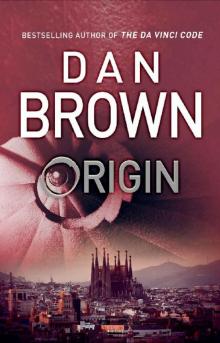 Origin
Origin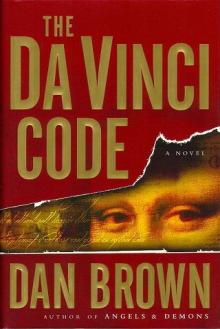 The Da Vinci Code
The Da Vinci Code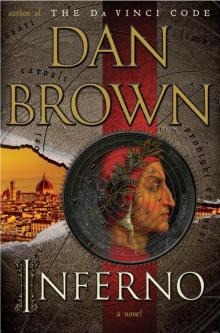 Inferno
Inferno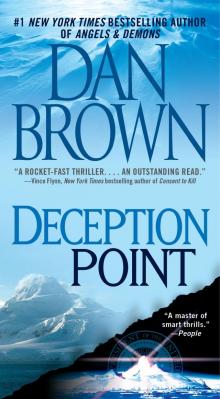 Deception Point
Deception Point Digital Fortress
Digital Fortress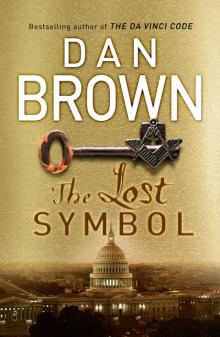 The Lost Symbol
The Lost Symbol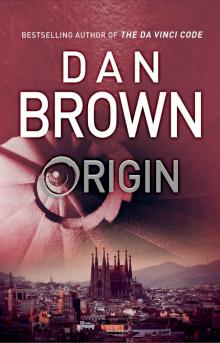 Origin: (Robert Langdon Book 5)
Origin: (Robert Langdon Book 5) Angles & Demons
Angles & Demons Inferno: A Novel
Inferno: A Novel Angels & Demons rl-1
Angels & Demons rl-1 The Great Expectations School
The Great Expectations School The Lost Symbol rl-3
The Lost Symbol rl-3 Angels and Demons
Angels and Demons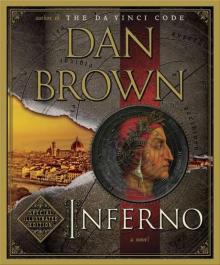 Inferno: Special Illustrated Edition: Featuring Robert Langdon
Inferno: Special Illustrated Edition: Featuring Robert Langdon